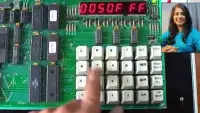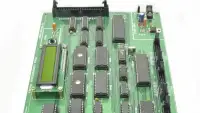Description
In this course, you will learn :
- Geometric Dimensioning and Tolerancing Fundamentals
- How to Use GD&T on a Part Drawing
- Why is GD&T required, and what are the benefits over the traditional method?
- In the Practice section, put what you've learned into practise with thought-provoking exercises and multiple problem sets.
- 50+ questions will help you reinforce concepts.
- Learn from an experienced design engineer who has designed chassis systems in the real world.
Syllabus :
1. Introduction and Basics of Engineering drawing
- My Learning journey and a Learning guide to GD&T
- Importance of Engineering Drawing
- The Three Major stakeholders
- Quality of Drawing
- Cost Of Drawing Error
- 3D Model to 2D representation
- Orthographic Projection of 3D into 2D and 1st angle and 3rd angle projection
- What is Dimensioning?
- Concept of Tolerance
- Ways of representing tolerance
- Fits in Mechanical Assemblies
- Types of Fits and Selection
- How is Tolerance decided?
- Drawing with Tolerances
- Engineering Drawing Template
- Need from the Drawing
- What is a Feature?
- Dimension types on drawings
- How is Inspection of parts done?
- CMM inspection
2. Need for GD&T.
- Tolerancing a pin with a gauge hole
- Issue with Traditional tolerancing - No Relative control of features
- Issue with Traditional tolerancing - Ambiguity in Inspection
- Issue with Traditional tolerancing - No Assembly consideration
- Issue with Traditional tolerancing - No control of Profiles
- Why GD&T is needed?
- Example of Parallel faces
- T slots example
- Poppet of Valve example
- When to use Co ordinate tolerancing and when not
3. Introductory Concepts of GD&T
- Origins of GD&T
- Size, Form, Orientation and Location
- What is GD&T ? What are the important concepts?
- The Feature control Frame
- Basic Dimensions
- Common Drafting Errors- Basic dimensions and Feature control frame
- Feature of Size
- Identifying Feature of Size
- Identifying Feature of size Example 2
- Irregular Features of Size and comparison
- Comparison between GD&t and non GD&T
- Material Conditions
- Rule 1 of GD&T
4. Datums
- How Datums are Created
- Datum and Datum Feature , Terminology
- Datum Reference Frame
- Datum reference frame CAD demonstration
- Datum Reference frame - 2 Cylindrical feature and 1 Planar feature
- Datum Reference Frame - 1 Cylindrical and 2 Planar feature
- Selection of Datums
- Simple Process of Applying Datums
- Examples of Datum Scheme selection
- Exercise in selection and sequencing of datums
- Tolerance Zone
- How GD&T Helps Inspection?
- Tolerance zone Comparison for Position control of Hole
- Comparison Summary
- Inspection Requirements
5. Bonus tolerance and Virtual condition
- Material Modifiers on Geometric tolerance
- Material Modifiers Example
- Shaft Position Tolerance Brief
- Hole position tolerance
- Virtual Condition of Shaft
- Virtual Condition of Hole
- Condition for Successful Assembly
- Functional Gauging using Virtual condition
- Internal and External Boundaries
- Resultant Condition External Feature of Size at MMC
- Resultant Condition Internal Feature of Size at MMC
- Resultant and Virtual conditions for LMC and Summary
- Example with LMC modifier and calculating minimum wall thickness
- Example 2 with LMC modifier and calculating minimum wall thickness
- Tolerance Calculations for manufactured part - RFS vs LMC vs MMC with exercise
- Actual Mating Envelope
6. Form Control
- Introduction to Planar Straightness and its inspection
- Straightness of Cylindrical surface
- Straightness of Axis and comparison
- Inspection of Axis straightness
- Material modifier in Axis straightness
- Inspecting Axis straightness with modifier using Functional Gauge
- Inspecting Axis straightness
- Applications of Straightness control
- Straightness applied differently in two directions
- Flatness and its Inspection
- How Flatness saves money.
- Rule 1 and Flatness
- Summary of Flatness control
- Inspecting Circularity
- Cylindricity
- Inspecting Cylindricity
- Points on cylindricity and circularity
- Difference between Surface straightness control and cylindricity
7. Orientation control
- Angularity control
- Angularity Inspection
- Perpendicularity
- Inspecting Perpendicularity
- Perpendicularity of Feature of size
- Parallelism
- Inspection of Parallelism
8. Location control
- Position Control and its Inspection
- Comparison between Perpendicularity and position
- Concentricity
- Symmetry
- Example of Orientation + Position control
9. Runout
- Circular Runout
- Circular Runout on Perpendicular Face
- Total Runout
- Total Runout on perpendicular face
- Applications of Runout
- Runout controls both Concentricity and Cylindricity
10. Profile
- Profile of a Line
- Profile of a surface and its Inspection
- Points on Profile tolerance
- Profile Control variation with Datums
11. Datum feature modifier- Datum Shift
- Datum Feature Modifier Introduction
- Datum feature modifier Example
- Datum feature modifier example continued
- Datum Shift Example no.2
- Datum reference frame is fixed
- Benefits of Datum shift
- It is not Bonus tolerance









